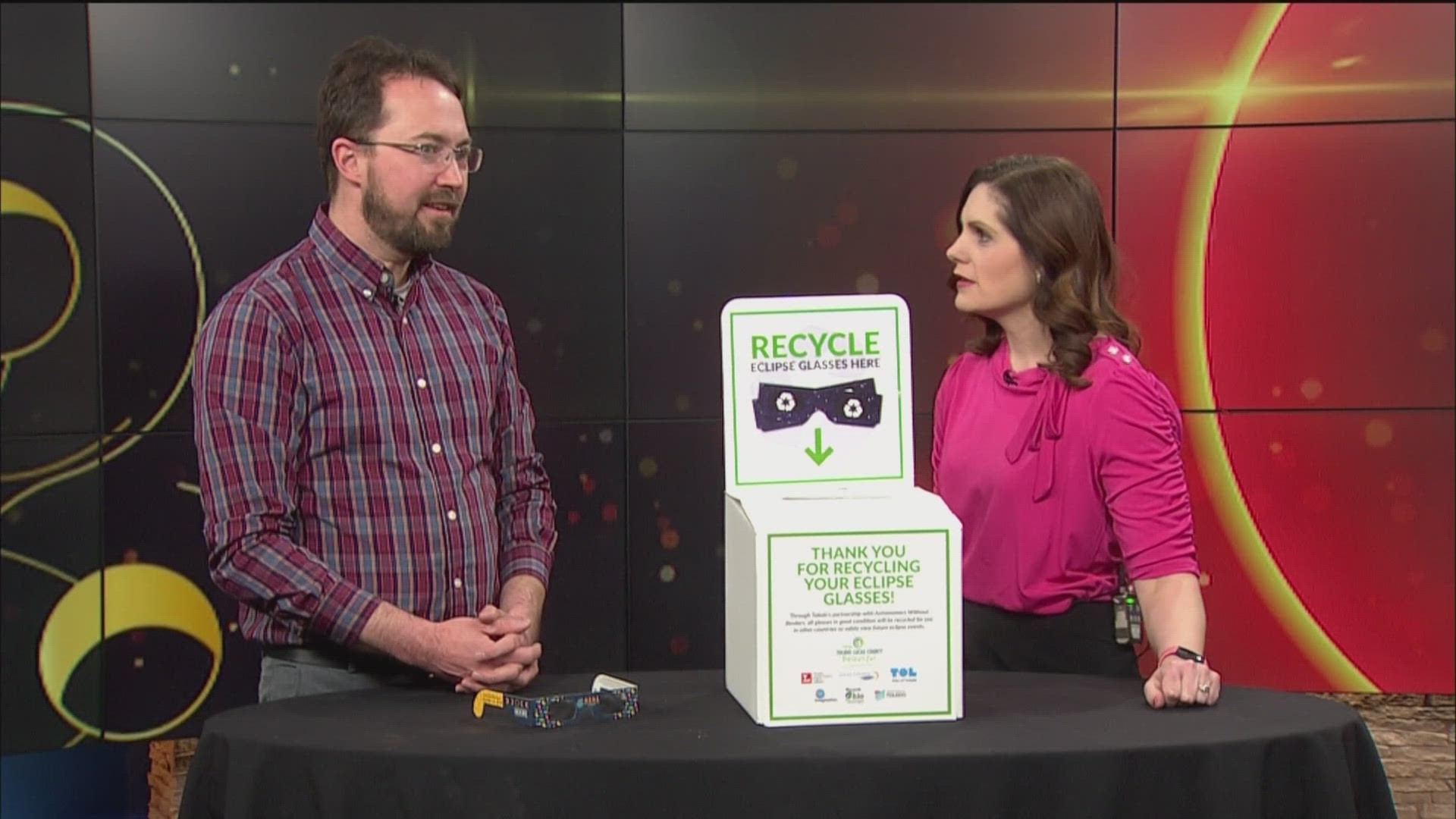WASHINGTON — The total solar eclipse brought a chilly, midday darkness across North America on Monday, captivating millions of eagle-eyed spectators.
Eclipse mania gripped all of Mexico, the U.S. and Canada, as the moon swept in front of the sun, blotting out daylight. Solar eclipse glasses were at hand for many folks in the front seat of the celestial event, granting a safe way of viewing the solar eclipse.
Now that the eclipse has exited North America, what should you do with your viewing glasses?
How to donate your eclipse glasses
One option is to donate your eclipse glasses, allowing someone else in other parts of the world to safely view the rare celestial occurrence.
Astronomers Without Borders has been sending donated solar eclipse glasses to people who may not have a safe way to view an eclipse since 2008, according to the group. The organization has sent tens of thousands of eclipse glasses to South America, Asia and Africa, including some donated by Americans after the 2017 solar eclipse.
One of their national collecting partners is Warby Parker, with over 240 retail stores across the US accepting used solar eclipse glasses.
Eclipse Glasses USA also has options for donating eclipse glasses.
Their "Eclipse Give Back" program will collect gently-used eclipse glasses and send them to schools in Latin America for the upcoming annular eclipse in October. Glasses must not have any scratches, punctures, tears or any damage that might "compromise the protective quality of the glasses."
Eclipse Glasses USA had also offered a "5 for 1 program" where for every five pack of glasses, one pair would be donated to a school in Latin America. The program "generated 30,000 pairs of glasses" as of April 2024, according to the site.
Glasses can be shipped in an envelope via USPS First-Class Mail. For large shipments, please consult with your local post office for the most cost-effective way to ship.
Mailing address:
Eclipse Glasses USA, LLC
PO BOX 50571
Provo, UT 84605
For more information on how to ship your used solar eclipse glasses, check out their site.
How to recycle eclipse glasses
If you're not looking to keep the solar eclipse glasses as memorabilia, another option you may have is to recycle them.
It's important to note that the lens of the glasses are not recyclable, so they must be thrown out before recycling them.
The arms of the eclipse viewing glasses, which are typically made out of cardboard, can be recycled, according to the University of Rochester.
Can I keep my eclipse glasses from 2024 solar eclipse?
You can also keep your eclipse glasses as a souvenir from Monday's celestial event.
For those looking to reuse the eclipse glasses on your next solar eclipse chase, it's important to note that they can be reused as long as the glasses are in compliance with the ISO 12312-2 safety standard, according to Eclipse2024.org.
Additionally, the eclipse glasses mustn't have any scratches, punctures or tears in order to be reused indefinitely.
It'll be quite a while before the U.S. gets to see a total solar eclipse like the one millions experienced Monday.
When is the next solar eclipse after 2024?
Full solar eclipses occur every two or three years, often in the middle of nowhere like the South Pacific or Antarctic. The next total solar eclipse, in 2026, will grace the northern fringes of Greenland, Iceland and Spain.
North America won’t experience totality in a solar eclipse again until 2033, with Alaska getting sole dibs. Then that’s it until 2044, when totality will be confined to Western Canada, Montana and North Dakota.
There won’t be another U.S. eclipse spanning coast-to-coast until 2045. That one will stretch from Northern California all the way to Cape Canaveral, Florida.

